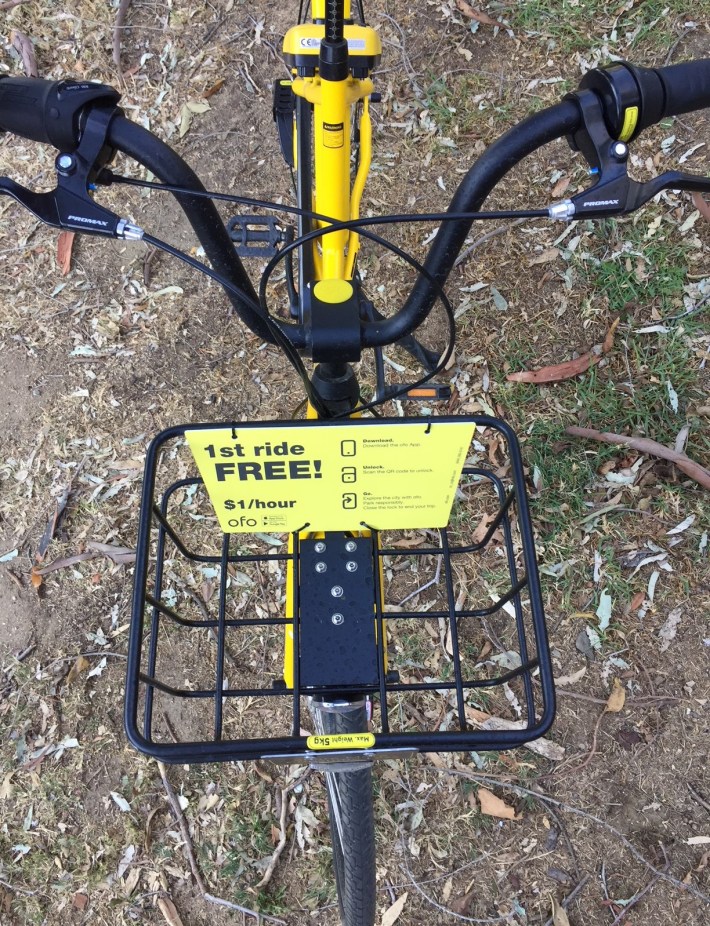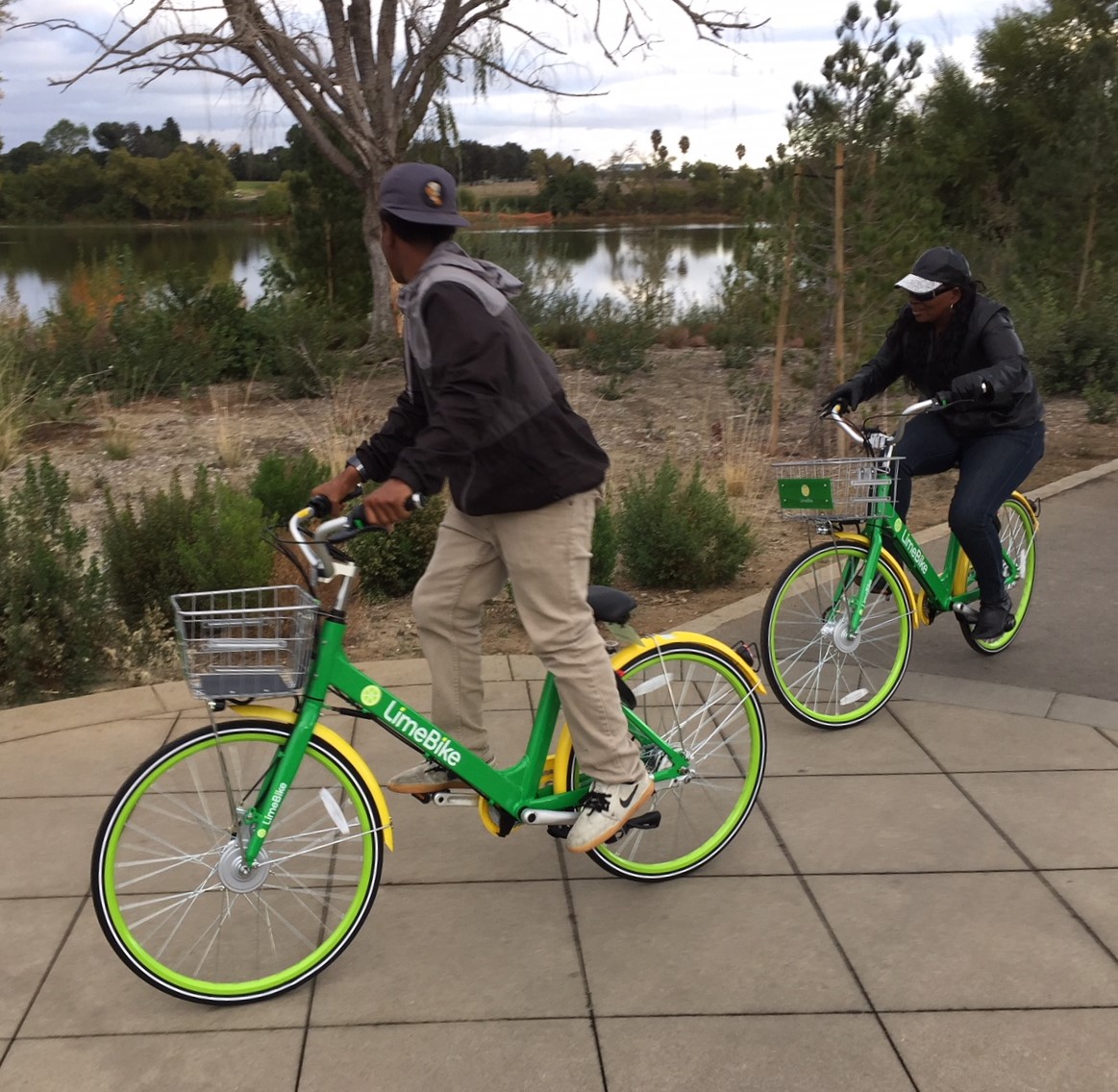Streetsblog readers have probably already heard that private dockless bike-share has arrived in Los Angeles. Since November, three DoBi systems are operating in select parts of the city. I got a chance to ride each of these systems. This article does not claim to be a systematic analysis of L.A.'s nascent DoBi systems, but instead just my first impressions of how these bikes perform.
As the city of Los Angeles Transportation Department (LADOT) works out its rules for permitting DoBi operations (council file 17-1125, expected to be heard in Transportation Committee in January or February), Streetsblog L.A. plans to continue to look into how these brand new DoBi systems are performing in the communities where they've been deployed.
1. Spin
Spin are bright orange bikes. There are currently 40+ bikes in what Spin calls a "small pilot program in Koreatown" that began in late November mostly along Wilshire Boulevard. Looking at the app today, the Spin bikes appear to have already dispersed into adjacent neighborhoods including Pico Union, Mid-Wilshire, East Hollywood.
I rode a Spin bike in November. It was, frankly, crappy.
The adjustable seat does not come high enough for a comfortable ride for a tall person. I am 6'3" tall, and, on the tallest setting, my knees were uncomfortably close to the handlebars. Both Metro Bike Share and Breeze bikes are, at their highest settings, comfortable for me.

I put a little pressure on one of the Spin bike's handlebar grips, which came off.
2. ofo
According to the Department of Recreation and Parks Tracy James, "approximately 50" bright yellow ofo DoBi bikes are available now, for "a one year pilot program" in Griffith Park. The bikes are scattered around, mostly in the flatter parts of the park, including the Shane's Inspiration area, the Autry Museum, and Travel Town.
Recently a few of these bikes have spread to park-adjacent areas, including Los Feliz.
Similar to the Spin bikes, I found one ofo bike I rode to be crappy.

Like Spin, ofo's adjustable seat is too low for a 6'3" person.
As I was riding the one ofo bike around, it seemed to have some sort of steering problem. At first I couldn't quite tell what the problem was, but then I realized that the front wheel wasn't lined up with the handlebars; it was off a few degrees to the left. This isn't terrible. This sort of misaligned bike is still rideable, especially after I figured out what was up. The one I tested was in a group of seven; upon inspection I found three of those seven appeared to have similar front-wheel misalignments.



3. LimeBike
L.A. City Councilmember Joe Buscaino has spearheaded introducing the LimeBike DoBi system into various Council District 15 neighborhoods, including San Pedro, Watts and Wilmington. In a statement posted to Facebook, Buscaino expressed his support for both DoBi and docked Metro Bike Share:
The only way we will determine which bike system works the best is by trying all of them out. We might not even find that there is one winner - I suspect we might find that one system works best for one community while another works best in a different community, depending on factors like topography, demographics, and land use patterns.
According to LimeBike, their CD15 pilot has 630 bright green bikes. In their first month in L.A., they report 5,000 active riders.

Yesterday, I attended a kick-off for LimeBike coming to CD15's Harbor City neighborhoods.
I was pleasantly surprised by LimeBike. The bike quality is significantly better than ofo and Spin, though a notch below the seemingly-indestructible Metro Bike Share and Breeze docked municipal systems.
LimeBike's adjustable seat was tall enough for me to ride comfortably.
In addition to size and sturdiness, LimeBike bikes have a good minor add-on features that make sense for today's urban bicycling: springs to give stability one-hand (or no-hands) riding, and a phone holder.


All three of the DoBi systems described feature a 3-speed internal hub, good step-through frame geometry, and generator-powered lights. Both LimeBike and Spin feature front rack solar chargers to power the app-enabled back-wheel locking system.
Readers - have you tried out these new bike-share systems? What has your experience been?










